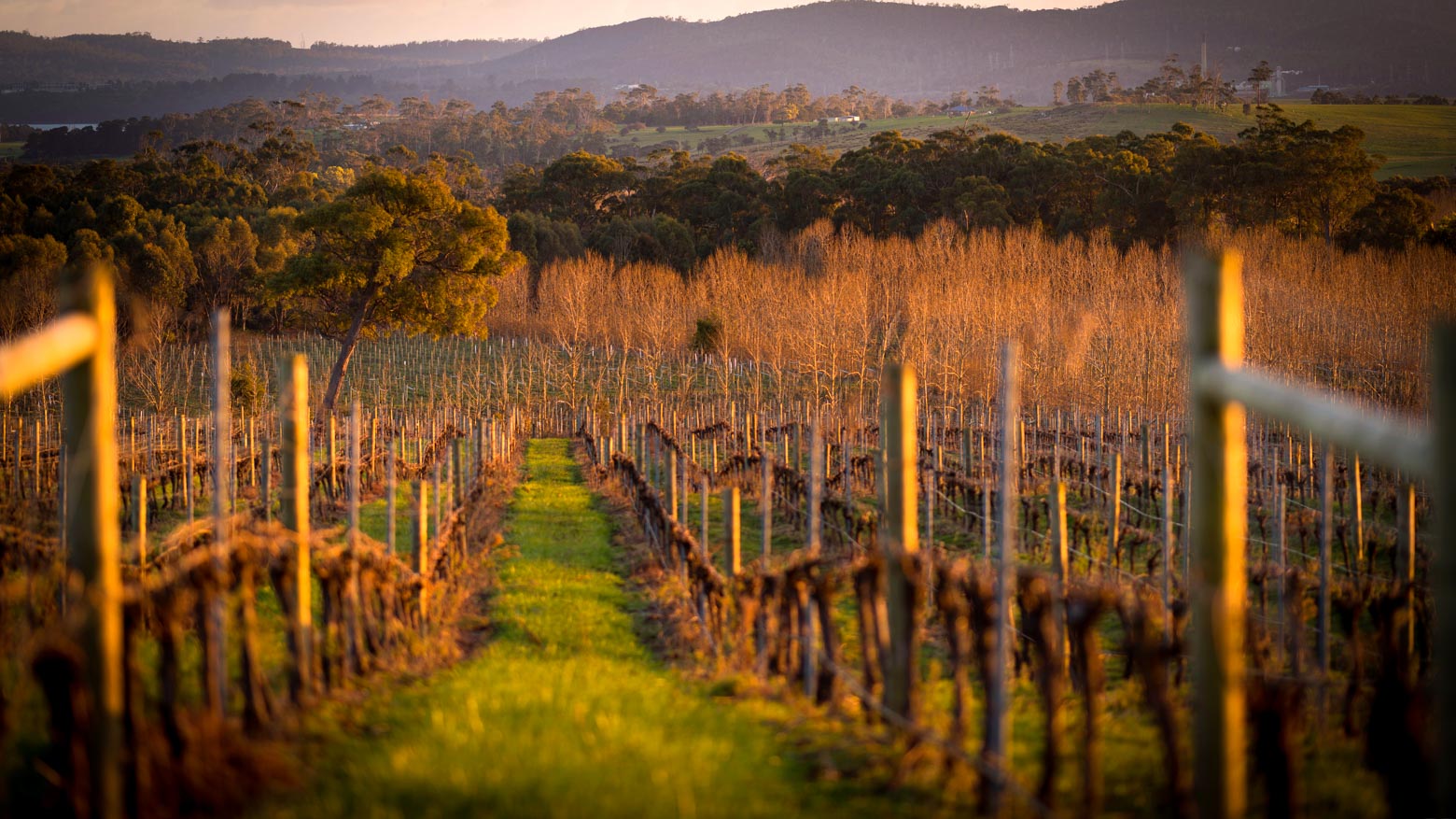Tasmania’s Tamar Valley Wines

As state and federal governments begin their push to encourage all of us to holiday domestically this year, there’s probably no better time to visit Queensland’s far north – but if a cooler climate, fresh air and a world-class wine trail are high in your list of priorities, look no further than the pristine beauty of Tasmania’s Tamar Valley.
Steeped in history, the Tamar River was “discovered” by explorers Bass and Flinders in 1798 at a time when the area was home to the Leterremairrener and Pangerninghe people. Launceston was settled sometime later in 1806 and the early settlers of the region worked largely in agriculture or logging. When gold was discovered at Beaconsfield in 1877, the area really started to grow new industries and by the end of the 19th century, a wharf was established to facilitate transport of produce (such as apples) to the mainland.
Stretching over 60 kilometres from Launceston to the sandy shores of Bass Straight, the valley is home to some 32 vineyards and a whole bunch of artisan cheesemakers, restaurants and even beer and cider producers. With everything from gold mines, national parks, scenic lookouts and picturesque picnic spots, there’s sure to be something to interest everyone in the family – there’s even a sea horse farm at Beauty Point to keep the youngsters amused! But during my recent field trip there was only enough time to scratch the surface of the expanding local wine industry and pleasingly, the quality surprised on the up-side!
The Tamar Valley claims to have some of the oldest vineyards in Australia as commercial vineyards operated at Windermere as early as the mid 1800’s. It was over a century later however, when vineyards focussing on the production of grapes for table wine began to flourish. The earliest was probably La Provence – which was planted in 1956. By the 1960’s other iconic brands such as Heemskerk and later, Piper’s Brook rose to national prominence.
These days, the Tamar Valley has some rising industry stars on the global wine stage – producers like Swinging Gate, Tamar Ridge, Holm Oak and notably, Josef Chromy. While I love the power and weight of the Holm Oak wines ( especially their chardonnay), it was the poise and grace of the Josef Chromy stable that really captured the attention of my taste buds.
The Josef Chromy story is as captivating as it is inspiring. Having left a post Nazi-occupied war-torn homeland ( in what is now the Czech Republic) as an impoverished 19-year-old, Josef found himself in the Apple Isle and went on to build and sell a meat and smallgoods business that eventually floated on the ASX, before going on to invest heavily in the Tasmanian wine industry. He has been instrumental in establishing and growing a number of large Tasmanian wineries, including Heemskerk, Bay of Fires ( then called Rochecombe) and Jantsz. At 76 years of age, Josef launched Josef Chromy Wines in 2007 and the venture very quickly established it as one of Australia’s leading cool climate producers.
While it’s the sparkling styles like their traditional method bubbly that tend to take the limelight, the Chromy pinot noir and chardonnay are the undisputed stars of the side when it comes to the single varietals. My tasting companion and I were treated to a sampling of some of their back vintage Zdar range during our fleeting cellar door visit – wines which are only made there are exceptional barrels found during the very best of vintages. The 2014 Zdar pinot is drinking beautifully – showing ample red fruits, cherries and the savoury undertone of some whole bunch pressing. Who said that Tasmanian pinot is best consumed young!
Of the current vintages, it’s impossible to ignore the 2019 Josef Chromy Chardonnay. Hand-picking of the fruit starts the wine’s passage to perfection as it journeys through whole bunch pressing before spending some time relaxing in French Oak barriques. Once in the glass, the quality strikes your nostrils with the first whif; and the high-end impression lingers as the waves of fleshy nectarine, honeydew and peach evolve across your palate. At the $39 price point, I reckon its pretty good value as it compares favourably with others that sell for more than twice that ask.
Oeno-tourism is on the rise and as borders re-open and airports begin to bustle once more, there’s little doubt that the Tamar Valley will attract more than its fair share of visitors; and if you’re lucky enough to be one of them be sure to book a driver and spend some time on the local wine trail- it’s first-class!
Photo: Rob Burnett – tasmania.com/points-of-interest/tamar-valley/